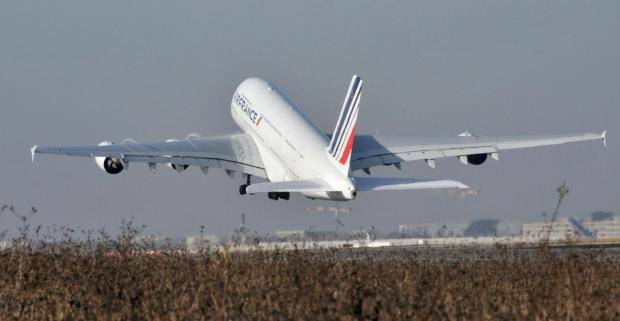
Continuing the good-news theme of recent LOTRW posts, the flight safety story lit up yesterday’s internet. This report, from Fortune’s website, gives the flavor: Airlines recorded zero accident deaths in commercial passenger jets last year, according to a Dutch consulting firm and an aviation safety group that tracks crashes, making 2017 the safest year on record for commercial air travel.
Dutch aviation consulting firm To70 and the Aviation Safety Network both reported Monday there were no commercial passenger jet fatalities in 2017. “2017 was the safest year for aviation ever,” said Adrian Young of To70.
To70 estimated that the fatal accident rate for large commercial passenger flights is 0.06 per million flights, or one fatal accident for every 16 million flights.
The Aviation Safety Network also reported there were no commercial passenger jet deaths in 2017, but 10 fatal airliner accidents resulting in 44 fatalities onboard and 35 persons on the ground, including cargo planes and commercial passenger turbo prop aircraft.
That figure includes 12 people killed on Dec. 31 when a Nature Air Cessna 208B Grand Caravan aircraft crashed minutes after takeoff into a mountainous area off the beach town of Punta Islita, Costa Rica.
In comparison, there were 16 accidents and 303 deaths in 2016 among airliners.
The deadliest incident last year occurred in January when a Turkish cargo jet smashed into a village in Kyrgyzstan as it tried to land at a nearby airport in dense fog, killing 35 on the ground and all four onboard.
The Aviation Safety Network said 2017 was “the safest year ever, both by the number of fatal accidents as well as in terms of fatalities.”
Over the last two decades aviation deaths around the world have been steadily falling. As recently as 2005, there were 1,015 deaths aboard commercial passenger flights worldwide, the Aviation Safety Network said.
Other reports included further background from Mr. Young, along more cautionary lines. This from The Independent:
…“It is unlikely that this historic low will be maintained; in part, these very positive figures rest on good fortune. Nevertheless, the safety level that civil aviation has achieved is remarkable”.
He cautioned: “The risks to civil aviation remain high as shown by the seriousness of some of the non-fatal accidents.” They included, he said, “the spectacular loss of the inlet fan and cowling of an engine on an Air France A380” over Greenland in September.
“That the aeroplane continued to operate safely to a diversion airport and was then flown home for repair on three engines says a lot about the robustness of the aeroplane.”
The report warns that electronic devices in checked-in bags pose a growing potential danger: “The increasing use of lithium-ion batteries in electronics creates a fire risk on board aeroplanes as such batteries are difficult to extinguish if they catch fire.
“Airlines worldwide are training their crews to fight any fires in the cabin; the challenge is keeping such batteries out of passenger luggage.”
As noted before in LOTRW (most recently here[1]) this aviation mindset – continuing vigilance, constantly learning from experience, laser-focused on relentless reduction of all causes and forms of risk, never yielding to complacency, is responsible for the result.
The key starting point? Shoulder responsibility for accidents – even (especially!) those that might be shrugged off as “natural” or “acts of God” (aircraft icing, hail, turbulence, downbursts, etc.). Identify and articulate the business case: “people will fly only if they know it’s safe.” For half a century, all parties – the airframe manufacturers, airlines, the FAA and others not just in the United States but worldwide – have bought in. Yesterday’s good news is the end result.
A closing reflection:
The world doesn’t enjoy similar good news when it comes to so-called “natural hazards.” As this past hurricane season has shown, the losses are headed in the opposite direction.
But the good news is we can do better and we know how! The path to better numbers (reduced fatalities, property damage, and business disruption) is roughly the same as for aviation. That includes the same starting point – accepting that “natural hazard losses” in reality reflect societal ways of doing business – and then developing the business case for disaster reduction. As it happens, John Plodinec blogged on this earlier today. Worth pondering.
Building community-level resilience to natural hazards? If you’re reading this blog you’ve likely already been making a direct or indirect contribution over recent years. Give yourself a well-deserved pat on the back! And please incorporate a bit more of the same into your New Year’s resolutions for 2018.
[1] additional LOTRW posts on the subject can be accessed here.
